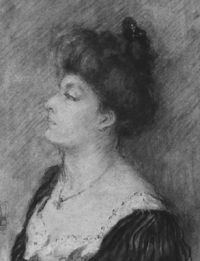Spouse(s) none Awards Wollaston Fund Role Palaeontologist | Children none Name Dorothea Bate | |
 | ||
Occupation Palaeontologist and archaeozoologist Parent(s) Henry Reginald Bate and Elizabeth Fraser Bate, nee Whitehill Died January 13, 1951, Westcliff-on-Sea, United Kingdom | ||
Dorothea Minola Alice Bate FGS (8 November 1878 – 13 January 1951), also known as Dorothy Bate, was a British palaeontologist, a pioneer of archaeozoology. Her life's work was to find fossils of recently extinct mammals with a view to understanding how and why giant and dwarf forms evolved.
Contents
Early life
Born in Carmarthenshire, Bate was the daughter of Police Superintendent Henry Reginald Bate and his wife Elizabeth Fraser Whitehill. She had an older sister and a younger brother. She had little formal education and once commented that her education "was only briefly interrupted by school".
Career
In 1898, at the age of nineteen, Bate got a job at the Natural History Museum in London, sorting bird skins in the Department of Zoology's Bird Room and later preparing fossils. There she remained for fifty years and learned ornithology, palaeontology, geology and anatomy. She was a piece-worker, paid by the number of fossils she prepared.
In 1901 Bate published her first scientific paper, A short account of a bone cave in the Carboniferous limestone of the Wye valley, which appeared in the Geological Magazine, about bones of small Pleistocene mammals.
The same year, she visited Cyprus, staying for 18 months at her own expense, to search for bones there, finding twelve new deposits in ossiferous caves, among them bones of Hippopotamus minor. In 1902, with the benefit of a hard-won grant from the Royal Society, she discovered in a cave in the Kyrenia hills a new species of dwarf elephant, which she named Elephas cypriotes, later described in a paper for the Royal Society. While in Cyprus she also observed (and trapped, shot and skinned) living mammals and birds and prepared a number of other papers, including descriptions of the Cyprus Spiny Mouse (Acomys nesiotes) and a subspecies of the Winter Wren (Troglodytes troglodytes cypriotes). In Cyprus, Bate lodged mostly at Paphos with a District Commissioner called Wodehouse. When not travelling in remote areas, often alone, she led an active social life.
She later undertook expeditions to many other Mediterranean islands, including Crete, Corsica, Sardinia, Malta, and the Balearic Islands, publishing work on their prehistoric fauna. In the Balearics in 1909, she discovered Myotragus balearicus, a previously unknown species of the subfamily Caprinae. On the plateau of Kat, in eastern Crete, she found remains of the Cretan dwarf hippopotamus. In Crete, she got to know the archaeologists then excavating Knossos and other sites on the island, who were throwing light on the Minoan civilisation.
Finding herself pursued by the British Vice-Consul in Majorca, Bate commented: "I do hate old men who try to make love to one and ought not to in their official positions."
According to The Daily Telegraph –
In the 1920s, Bate worked with the archaeologist Professor Dorothy Garrod in Palestine, and in 1937 they published together The Stone Age of Mount Carmel volume 1, part 2: Palaeontology, the Fossil Fauna of the Wady el-Mughara Caves, interpreting the Mount Carmel excavations. Among other finds, they reported remains of the hippopotamus.
Bate also worked with Percy R. Lowe on fossil ostriches in China. She was a pioneering archaeozoologist, especially in the field of climatic interpretation. She compared the relative proportions of Gazella and Dama remains.
In the late 1930s, towards the end of her career in field work, Bate found the bones of a giant tortoise in Bethlehem.
Many archaeologists and anthropologists relied on her expertise in identifying fossil bones, including Louis Leakey, Charles McBurney, and John Desmond Clark.
During the Second World War, Bate transferred from the Natural History Museum's department of geology in London to its zoological branch at Tring, and in 1948, a few months short of her seventieth birthday, she was appointed officer-in-charge there. Although suffering from cancer, she died of a heart attack on 13 January 1951, and as a Christian Scientist was cremated. Her personal papers were destroyed in a house fire shortly after her death. On her desk at Tring was a list of 'Papers to write'. By the last in the list she had written Swan Song.
Her estate at death amounted to £15,369.
In 2005, a 'Dorothea Bate facsimile' was created at the Natural History Museum as part of project to develop notable gallery characters to patrol its display cases. She is thus among other luminaries including Carl Linnaeus, Mary Anning, and William Smith. They tell stories and anecdotes of their lives and discoveries.
In her biography Discovering Dorothea: the Life of the Pioneering Fossil-Hunter Dorothea Bate, Karolyn Shindler describes Bate as "witty, acerbic, clever and courageous". Shindler is also the author of the biography in the 2004 edition of the Dictionary of National Biography.
Selected publications
Honours
Portrait
A watercolour portrait of Bate as a young woman, drawn by her sister, is at the Natural History Museum. In it she wears a black dress trimmed with white lace, and a large pink rose.
